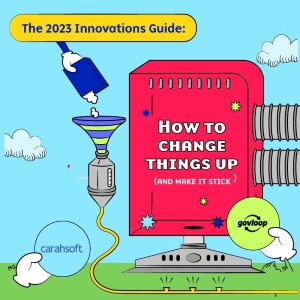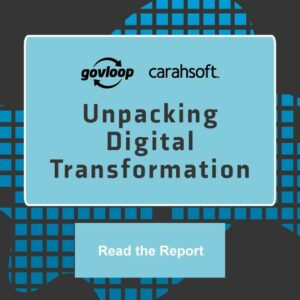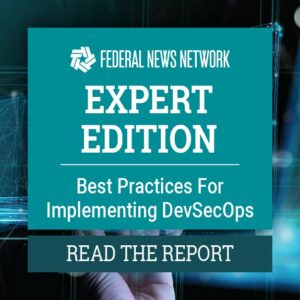In government, we could say that innovation is invention that solves a problem or meets a need — in the community or within an organization undertaking the work. Big changes make government agencies more effective, prepared and useful, and they touch all aspects of agency operations — from IT to employee morale to digital services and more. In recent years, federal agencies such as the Census Bureau, General Services Administration, Department of Homeland Security, Department of Housing and Urban Development, and Office of Personnel Management have launched innovations labs, innovation libraries, and other innovation-focused resources and programs. Cities and states have as well, such as through Philadelphia’s Technology and Innovation group within the city’s Office of Innovation and Technology (OIT). Being innovative is not easy, of course: It requires a little bravery and lots of planning. But local and federal agencies are creating the space and resources to launch innovations that will, in the future, become standard operations. In this guide, we share case studies and best practices regarding some of government’s most pressing issues — workforce, customer experience and data use, to name a few — and we hear from government experts who know a thing or two about helping innovative initiatives succeed.
 Analytics Innovations Draw a Complete Data Picture
Analytics Innovations Draw a Complete Data Picture
“Spreadsheets are structured things: They have clearly defined lines, cleanly labelled columns, and rules that govern what goes where. Government analytic programs have become skilled at working within those parameters, even if it means spending hours manually manipulating data to fit. Spreadsheets are 30-year-old desktop technology. But other data exists, doesn’t it? The world is full of PDF documents, audio and video files, social media posts and other ‘messy’ data sources — the unstructured data that most agencies overlook. And most agency analytics programs are fragmented and overly manual. Recent innovations seek to change this.”
Read more insights from Alteryx’s Solutions Marketing Director for the Public Sector, Andy MacIsaac.
Driving Innovation to the Edge
“Across government, innovation is happening at the edge. By leveraging cloud, artificial intelligence (AI), machine learning (ML) and related technologies, agencies can deliver services more quickly and effectively at the far reaches of operations, whether that’s in the battlefield or on the International Space Station (ISS). At the Red Hat Government Symposium held in late 2022, government and industry leaders discussed how agencies were leveraging these technologies to accelerate mission delivery. Their discussions and examples help illuminate how agencies are adapting to make the most of modern technological opportunities.”
Read more insights from Red Hat’s Government Symposium.
Build an Innovative Ecosystem Through Cloud Architecture
“In data transformation and innovation, it helps to view things through a different lens. Within the data ecosystem are three core pillars for transformation: people, processes and technology. Simple, singular data platforms should work with an architecture that breaks down information silos rather than creates them. That facility comes through in qualities such as data mesh or a decentralized data architecture that’s organized by business domain and operates through self-service. The architectural design also must help strengthen system security. That’s enormously important for federal data.”
Read more insights from Snowflake’s Chief Technology Officer for the Global Public Sector, Winston Chang.
Overcoming Challenges With Observability
“As agencies take steps to innovate — such as expanding reliance on the cloud and adding new apps, integrations, and automations — their IT ecosystems become more complex. There are more places where things can go wrong and more pressure to fix them quickly. The task of monitoring these complex systems gets more complicated, too. ‘The question is, how do I know there’s an issue?’ said Brian Mikkelsen of Datadog. ‘Is it when the tickets start flowing, when complaints increase, when your leadership team asks why something isn’t working?’ None of those options are ideal. Datadog’s application performance management platform provides a real-time window into the digital environment, identifying performance and security issues quickly. Its ‘full stack’ hybrid infrastructure capability means everything from the back end to the front end is monitored and reported via infrastructure metrics, application performance traces, and correlated logs.”
Read more insights from Datadog’s Vice President and General Manager, Brian Mikkelsen.
Download the full GovLoop Guide for more insights from these digital transformation leaders and additional government interviews, historical perspectives and industry research.

 How Agencies Are Driving Innovation to the Edge
How Agencies Are Driving Innovation to the Edge 